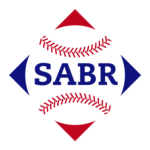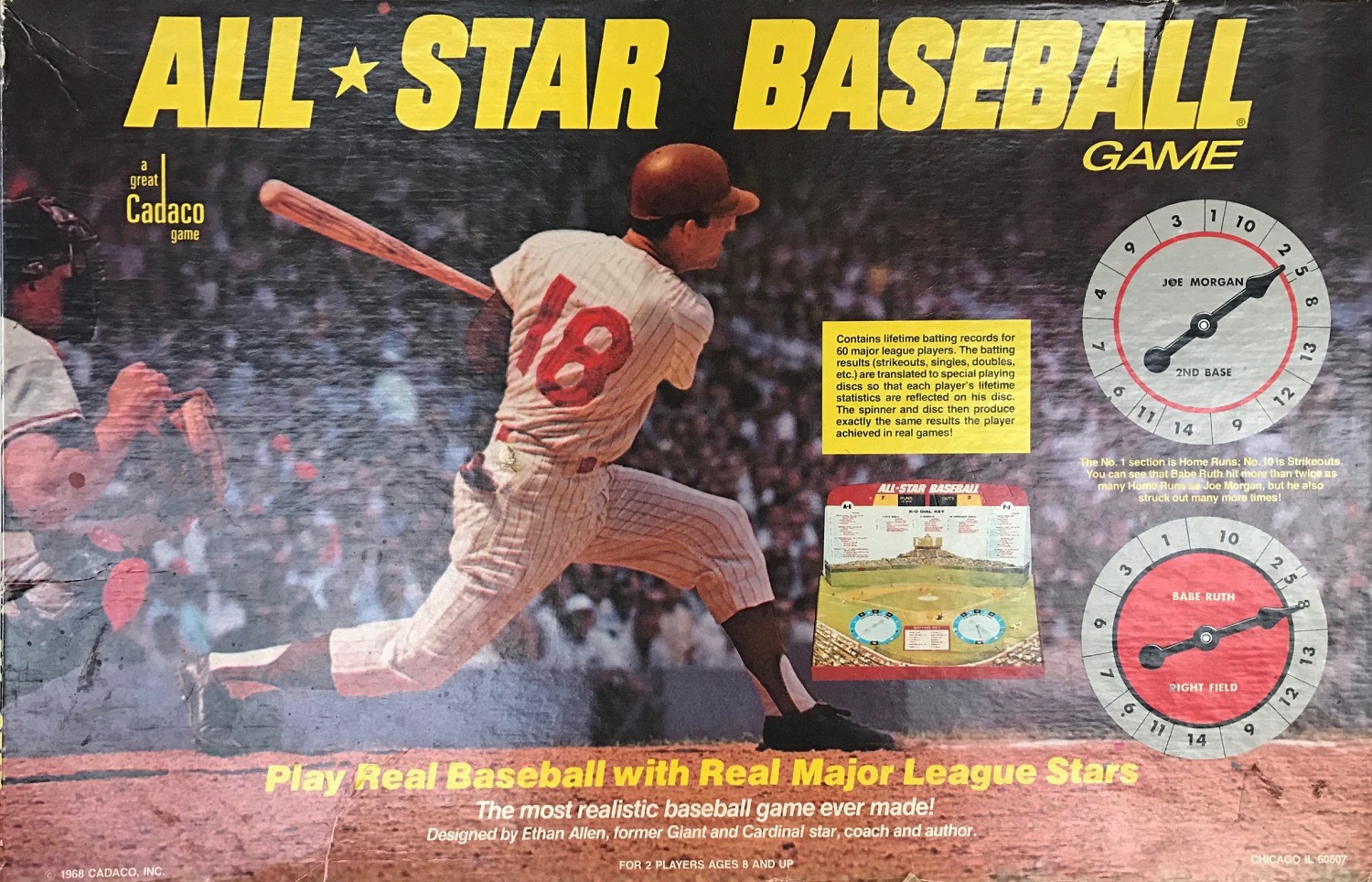
All-Star Baseball debuted in 1941, nestled between APBA’s precursor, National Pastime (1930) and Hal Richman’s Strat-O-Matic (1961). In this era, the game bore the name of former big-leaguer, Ethan Allen. Yet, it was a product of Cadaco-Ellis, Inc., eventually re-branded Cadaco’s All-Star Baseball.
In Dad’s workroom, this game merely…existed…in a chrysalis of dust mites, webbing and apathy. Though I was initiated through Statis Pro Baseball, the muted tones of All-Star Baseball’s colorfully faded box caught my eye. Thus, began my tinkering.
1060 West Addison Street
After a quick cleaning, I lifted the lid to reveal All-Star’s most appealing characteristic: it’s pseudo three-dimensional stadium. The game included a tray, flipped over inside the box bottom, while an insert attached to pre-fabricated notches, displaying an actual image of Chicago’s Wrigley Field bleachers. The tray itself, was the “Friendly Confines’ ” actual infield. On this tray were two plastic hemispheres, each fitted with rickety tin spinners. These held your player discs.
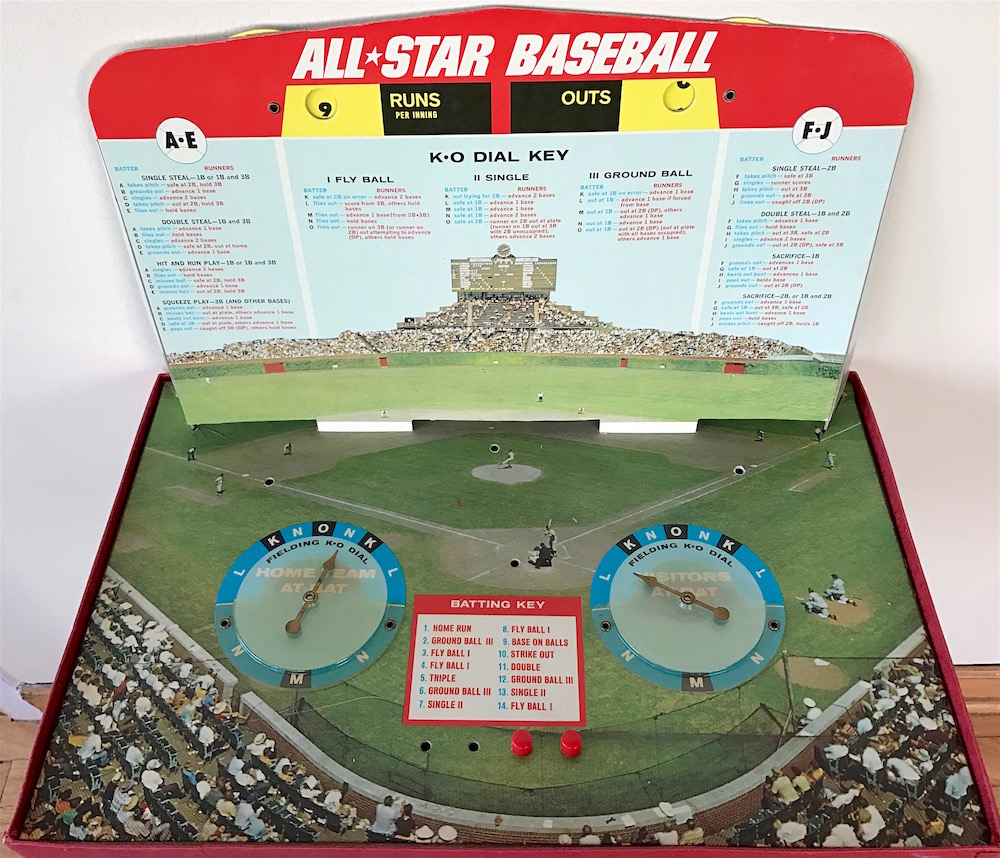
Ah, those player discs. A most intriguing idea and truly unique. The discs were an ingenious method to represent player performance: percentages rendered as parts of a whole, or a Holiday pie. By the time I tinkered with All-Star Baseball, I’d eaten enough pie to understand the principle.
Synergistically, my elementary school buttressed my comprehension of fractions and percentages. Mum began parting with pink hued Tupper Ware, permanently stained from ill-heated left-overs, and I filled these repositories with baseball cards, replete with the very percentages indicated on a player’s disc. The “wedged” expression of Babe Ruth’s batting skill and home run power crystalized “The Bambino’s” greatness.
If you ain’t cheatin’…
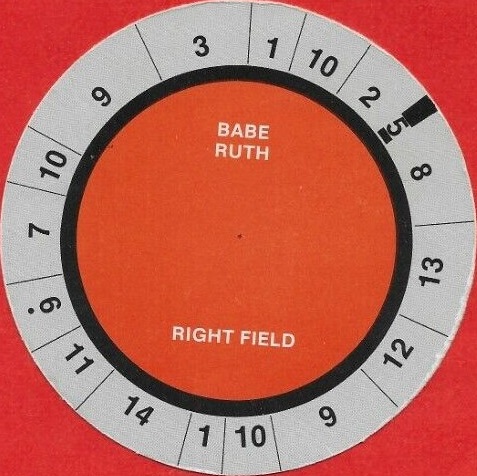
Cadaco’s spinner, however? Well, as Uncle Francis McInally used to brogue, “Et’s rrright minging”, as in it stunk. The spinner method of result determination proved a perpetual challenge to my burgeoning integrity. One flicked the persistently teetering needle, then waited for it to rest on a number indicating a result, these numbers proportional to a player’s statistical performance per pie wedge.
Yet, prevaricating “nudges” of one’s game tray yielded just the hit Al Simmons needed to drive in that game-winning run. As well, landing on the bold black dividing line was just about as good as a modern day replay challenge.
A Culinary Masterpiece?
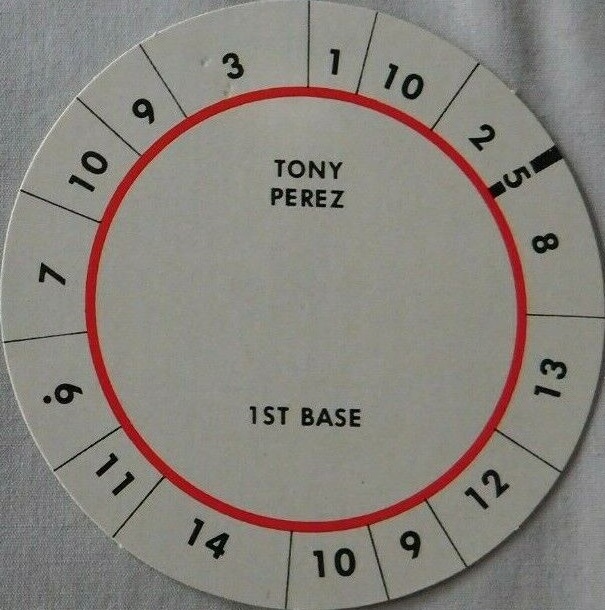
All-Star Baseball’s player discs were printed in three colors: scarlet, white & grey. They included the player’s name and position, but licensing prevented team affiliation. Their number codes, which governed player performance, were explained on a small table adjacent to the spinners.
If an aspiring Manager wanted to run a play, one inserted the “Strategy Disc”. Subdivided via the player discs, the “Strategy Disc” also included an inner ring of secondary results, its wedges coded alphabetically. The play results were explained atop the azure sky, overhead your Wrigley Field bleacher bums. A final set of lettered results enveloped the plastic hemispheres, representing fielding plays.
It’s as easy as…
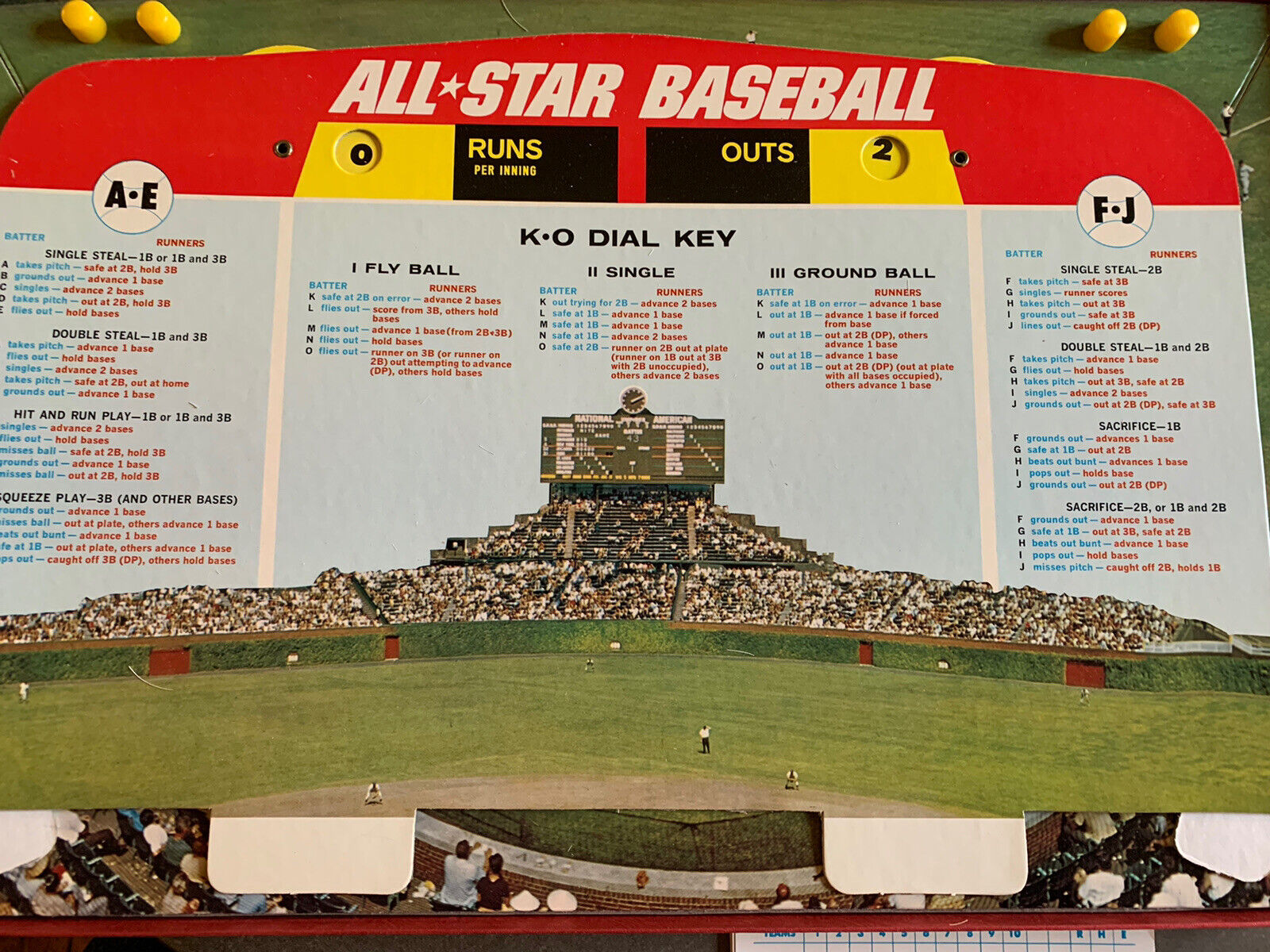
After arranging your line-ups then inserting a player disc, game play unfolded thusly: Only offense was represented, including one’s pitcher. You flicked the spinner and awaited deceleration. Once rested, you matched the number on the perimeter of the player disc, designated by the needle tip, to the same explained on the table between the spinners themselves, hence your batted ball results.
If your batter hit with bases occupied, then you noted the letter in the aqua & black exterior perimeter of the plastic hemispheres. As previously mentioned, these denoted fielding results in the “K-O” section of the North Side skyline. Ultimately, one knew their batter and runner’s disposition.
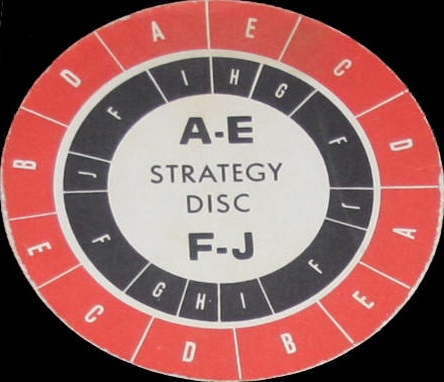
If you wanted to initiate offense, say…steal a base, one replaced your player disc with the “Strategy Disc” and proceeded normally. However, you read the letter commensurate with the appropriate game state, found in the scarlet or black rings of the “Strategy Disc”. The possible game states flanked Wrigley Field’s scoreboard, labeled “A-E” and “F-J”, corresponding to the appropriate scarlet or black ring of the disc. Again, one ultimately knew the disposition of their batter and runners following completion of a play. A game continued as such until a winner was determined.
“And in the end…”
That is it. That is Cadaco’s All-Star Baseball. A charmingly unencumbered experience with no dice, no fast action cards and no pitching at all. Its brilliance was found in the distinctly idiomatic player presentation, seemingly “…as American as baseball and [apple] pie”
Additional Resource:
Andrew Clayman’s brilliantly composed history of this game
is a two-time Honorably Discharged Veteran of the United States Army - the second, an Injury Resignation as a Cavalry Scout Officer. The Military afforded him two distinct science degrees: Magna Cum Laude in English-Secondary Ed. & Cum Laude in Clinical Research Psychology. He remains happily married with two brilliant children & continues a proud stay-at-home Dad.
- Ryan M. Liddellhttps://sabrbaseballgaming.com/author/domehead/
